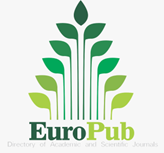Building resilience in Indonesian agrarian communities: Adaptation strategies and institutional barriers in response to climate change
DOI:
https://doi.org/10.61511/safses.v2i1.2025.2274Keywords:
agrarian communities, climate change, climate policy, local wisdom, resilience, sustainable livelihoodAbstract
Background: Climate change has become a real threat to the agricultural sector in Indonesia, with significant impacts on productivity, food security, and the welfare of farmers. Rising global temperatures, shifting rainfall patterns, and extreme climate events have increased the risk of crop failure and reduced the adaptive capacity of agrarian communities. This study aims to examine the adaptation and resilience strategies of agrarian communities in responding to climate change, as well as to identify the structural and institutional barriers they face. Methods: The research employs a qualitative approach with a case study design in several climate-vulnerable areas, including Wonosobo, Bima, and Maros. Data was collected through participatory observations, in-depth interviews, focus group discussions, and document analysis. The Sustainable Livelihood Framework is used to analyze five types of capital that influence farmers' adaptive capacity: natural, human, social, physical, and financial capital. Thematic analysis is applied to explore narrative patterns of farmers' adaptation to climate change. Findings: The findings of this research are expected to contribute to the formulation of community-based adaptation policies and the strengthening of climate-resilient agricultural systems. Conclusion: This study highlights the significant impact of climate change on agricultural livelihoods in Indonesia, while also revealing the adaptive resilience strategies developed by communities through various livelihood assets. Novelty/Originality of this article: This study also highlights the importance of institutional support, adaptive technologies, and the preservation of local wisdom as integral components of strategies to enhance the resilience of agrarian communities in Indonesia.
References
Adger, W. N. (2000). Social and ecological resilience: are they related? Progress in Human Geography, 24(3), 347–364. https://doi.org/10.1191/030913200701540465.
Amalia, R. (2015). Ketahanan petani terhadap perubahan iklim di pedesaan Kalimantan Timur. Jurnal Ilmu Lingkungan, 13(2), 81–90.
Austin, K. G., Schwantes, A., Gu, Y., & Kasibhatla, P. S. (2019). What causes deforestation in Indonesia? Environmental Research Letters, 14(2), 024007. https://doi.org/10.10888/1748-9326/aaf6db
Badan Meteorologi, Klimatologi, dan Geofisika (BMKG). (2022). Laporan perubahan iklim Indonesia tahun 2022. BMKG.
Badan Meteorologi, Klimatologi, dan Geofisika (BMKG). (2023). Prakiraan Musim dan Anomali Iklim Indonesia 2023. BMKG.
Bollettino, V., Alcayna-Stevens, T., Sharma, M., Dy, P., Pham, P., & Vinck, P. (2017). Resilience and disaster trends in the Philippines: opportunities for national and local capacity building. PLOS Currents Disasters, 9.
https://doi.org/10.1371/currents.dis.4a0bc960866e53bd6357f46be3c379ea.
Cubasch, U., & Meehl, G. A. (2001). Projections of future climate change. In J. T. Houghton et al. (Eds.), Climate Change 2001: The Scientific Basis (pp. 525–582). Cambridge University Press.
Dewi, S., van Noordwijk, M., & Ekadinata, A. (2017). Deforestation, land use change and livelihoods in Sumatra. Ecology and Society, 22(1), 37. https://doi.org/10.5751/ES-08889-220137
Dove, M. R. (1993). A revisionist view of tropical deforestation and development. Environmental Conservation, 20(1), 17–24. https://doi.org/10.1017/S0376892900037150
Ellis, F. (2000). Rural livelihoods and diversity in developing countries. Oxford University
Press. FAO. (2013). Climate-smart agriculture sourcebook. Food and Agriculture Organization of the United Nations.
FAO. (2019). FAOSTAT emissions database. Food and Agriculture Organization. Retrieved from http://www.fao.org/faostat/en/#data/GT
FAO. (2022). The state of the world’s land and water resources for food and agriculture 2021. FAO. https://doi.org/10.4060/cb9910en
FAO. (2023). Climate-smart agriculture initiatives in Southeast Asia. Rome: FAO.
Folke, C., Carpenter, S., Walker, B., Scheffer, M., Chapin, T., & Rockström, J. (2010). Resilience thinking: Integrating resilience, adaptability and transformability. Ecology and Society, 15(4),20. https://doi.org/10.5751/ES-03610-150420
Forest Watch Indonesia (FWI). (2022). Potret Keadaan Hutan Indonesia 2022. Bogor: FWI.
Hausfather, Z. (2025). Global temperature trends: 1970–2024. Journal of Climate Science, 58(3), 201–218. https://www.giss.nasa.gov/pubs/abs/sc05900r.html
Intergovernmental Panel on Climate Change (IPCC). (2022). Climate Change 2022: Impacts, Adaptation and Vulnerability. Cambridge University Press. https://doi.org/10.1017/9781009325844
Kusters, K., Achdiawan, R., Belcher, B., & Ruiz-Perez, M. (2017). Balancing development and conservation? A quantitative analysis of livelihood and environmental outcomes of non-timber forest product trade in Asia, Africa and Latin America. Ecology and Society, 22(3). 25. https://doi.org/10.5751/ES-09333-220325
Lele, U., Pretty, J., Terry, E., & Trigo, E. (2013). Transforming agricultural research for development. Global Food Security, 2(4), 290–296. https://doi.org/10.1016/j.gfs.2013.07.001
Lobell, D. B., Schlenker, W., & Costa-Roberts, J. (2011). Climate trends and global crop production since 1980. Science, 333(6042), 616–620. https://doi.org/10.1126/science.1204531
Margono, B. A., Potapov, P. V., Turubanova, S., Stolle, F., & Hansen, M. C. (2014). Primary forest cover loss in Indonesia over 2000–2012. Nature Climate Change, 4(8), 730– 735. https://doi.org/10.1038/nclimate2277
Nelson, R., Howden, M., & Smith, M. S. (2021). Using adaptive governance to rethink the approach to climate change adaptation policy. Environmental Science & Policy, 26, 1–10. https://doi.org/10.1016/j.envsci.2021.03.001
Oxfam. (2020). The climate finance shadow report 2020. Oxfam GB.
Pretty, J. (2003). Social capital and collective management of resources. Science, 302(5652), 1912–1914. https://doi.org/10.1126/science.1090847
Rencana Strategis Dinas Pertanian NTB. (2023). Renstra Dinas Pertanian 2023–2026. Pemerintah Provinsi NTB.
Tanner, T., Mitchell, T., Polack, E., & Guenther, B. (2015). Urban governance for resilience: Addressing risks for future urban development. Journal of International Development, 27(4), 527–544. https://doi.org/10.1002/jid.3080
Tacconi, L. (2016). Preventing fires and haze in Southeast Asia. Nature Climate Change, 6(7), 640– 643. https://doi.org/10.1038/nclimate3008
Utomo, B. (2016). Emisi gas rumah kaca dari sektor pertanian Indonesia. Jurnal Ilmu Lingkungan, 14(1), 1–9. https://dx.doi.org/10.21776/ub.jsal.2021.008.01.5
USAID ERAT. (2023). Laporan dampak kekeringan dan adaptasi petani NTB 2022–2023. USAID.
Warren, R., Hope, C., Mastrandrea, M., Tol, R. S., Adger, W. N., & Lorenzoni, I. (2006). Spotlighting impacts functions in integrated assessment. Research Report Prepared for the Stern Review on the Economics of Climate Change. University of Cambridge.
Wreford, A., Moran, D., & Adger, W. N. (2010). Climate change and agriculture: impacts, adaptation and mitigation. OECD Food, Agriculture and Fisheries Papers, No. 15. OECD Publishing. https://doi.org/10.1787/5km975m3d5bw-en
Yuliana, E. (2020). Corona virus diseases (COVID-19): Status and future perspectives: A narrative review. Journal of Preventive Medicine and Public Health, 53(4), 196– 204. https://doi.org/10.3961/jpmph.20.186
Downloads
Published
How to Cite
Issue
Section
Citation Check
License
Copyright (c) 2025 Aldi Agus Setiawan

This work is licensed under a Creative Commons Attribution 4.0 International License.












